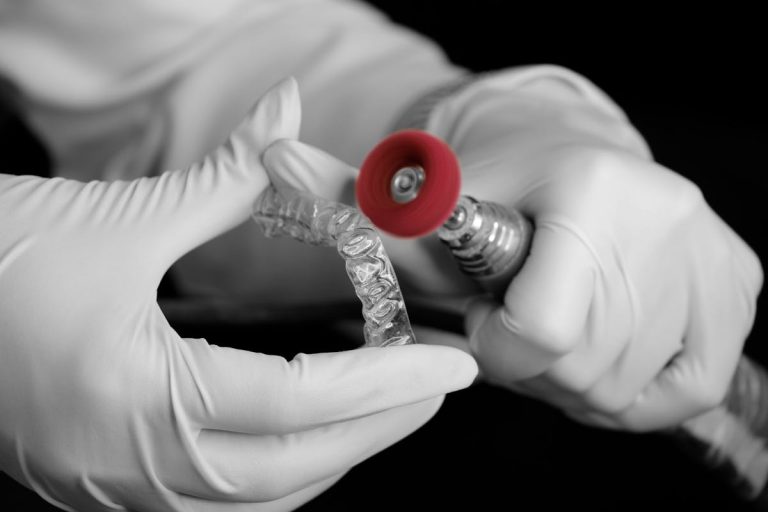- Establish and maintain an effective oral hygiene routine, including brushing twice daily, flossing daily, and incorporating fluoride mouthwash.
- Stick to tooth-friendly foods such as fruits and vegetables, dairy products, and lean proteins.
- Address tooth sensitivity and pain with professional dental care or desensitizing toothpaste.
- Consider dental fillings for early-stage tooth decay.
- Invest in root canal treatment for advanced decay to save the affected tooth.
Dealing with severe tooth decay can be a challenging and uncomfortable experience. Tooth decay occurs when the enamel and underlying layers of the tooth are damaged by acid-producing bacteria, leading to cavities and potentially causing excruciating pain and dental complications. If you face severe tooth decay, it’s crucial to take prompt action to prevent further deterioration and alleviate discomfort. This guide offers five valuable tips to help you manage severe tooth decay effectively, ensuring better oral health and a brighter smile.
1. Maintain a Diligent Oral Hygiene Routine
Maintaining a diligent oral hygiene routine is the first step in combatting severe tooth decay. Here are some tips for maintaining a diligent oral hygiene routine:
Brush Your Teeth Twice a Day
Regularly brushing your teeth is one of the most important parts of your oral hygiene routine. Use a soft-bristled toothbrush and fluoride toothpaste to avoid damaging your teeth’ enamel while effectively removing plaque and bacteria. Make sure to brush for two minutes each time, paying special attention to the back of your teeth and along the gumline. Additionally, replace your toothbrush every three months or after illness to ensure optimal dental hygiene.
Floss Every Day

Flossing is essential to maintaining a diligent oral hygiene routine, as it helps remove plaque and food debris from between your teeth and along the gumline. Take the time to floss between each and every tooth, slowly working your way from one side of the mouth to the other. Consider using a water flosser or an interdental brush to help clean those hard-to-reach areas.
Incorporate Fluoride Mouthwash
Rinsing with a fluoride mouthwash is another way to help strengthen your teeth and reduce the risk of further decay. Use it in addition to brushing and flossing, as it can help reach areas that are not accessible with a toothbrush or dental floss. Swish your mouthwash for at least 30 seconds or longer for best results.
Make Regular Dental Visits
Regular visits to the dentist are key to maintaining healthy teeth and gums. Professional cleanings can help remove any plaque or tartar build-up that has formed between your teeth. During these visits, the dentist will also be able to identify any signs of decay early on and recommend any treatments necessary for optimal dental health. Make sure to visit your dentist at least every six months, even if you have no problems. Doing so can help maintain a healthy and beautiful smile for years.
2. Adopt Tooth-Friendly Dietary Habits
Your diet plays a significant role in tooth decay prevention. Limit your intake of sugary and acidic foods and beverages, as they contribute to the growth of harmful bacteria in your mouth. Opt for tooth-friendly foods such as fruits and vegetables, dairy products, and lean proteins. Drinking plenty of water throughout the day can also help flush away debris and bacteria, promoting a healthier oral environment. If you indulge in sugary treats or acidic drinks occasionally, rinse your mouth with water afterward to minimize their harmful effects on your teeth.
3. Address Tooth Sensitivity and Pain

Severe tooth decay often leads to heightened tooth sensitivity and persistent pain. Consult your dentist promptly if you experience sensitivity to hot, cold, or sweet stimuli. They may recommend desensitizing toothpaste or fluoride treatments to alleviate discomfort. Over-the-counter pain relievers can temporarily help manage toothache but are not a long-term solution. Instead, seek professional dental care to address the underlying cause of the pain and explore appropriate treatment options, such as dental fillings or root canal therapy.
4. Consider Dental Fillings for Early-Stage Decay
Dental fillings can be an effective solution if your tooth decay is caught early. During this procedure, your dentist will remove the decayed portion of your tooth and fill the cavity with durable material, such as composite resin or amalgam. Dental fillings restore the tooth’s structure and prevent further decay from spreading. While fillings suit small to moderate cavities, more extensive decay may require an alternative treatment such as a dental crown or root canal.
5. Invest in Root Canal Treatment for Advanced Decay
When tooth decay reaches an advanced stage, a root canal treatment may be necessary to save the affected tooth from extraction. Root canal treatment removes the infected dental pulp and nerves from the tooth’s root canal system. The area is thoroughly cleaned, disinfected, and sealed to prevent reinfection. Although a root canal may sound intimidating, modern techniques have made the procedure relatively comfortable and highly successful. Saving the natural tooth through a root canal is often preferable, as it maintains the jawbone’s integrity and preserves neighboring teeth’ alignment.
In Summary
Dealing with severe tooth decay requires proactive and consistent efforts to protect oral health. By maintaining an excellent oral hygiene routine, adopting tooth-friendly dietary habits, addressing tooth sensitivity and pain, and considering appropriate dental treatments like dental fillings and root canals, you can effectively combat tooth decay and prevent further damage to your teeth. Remember, early intervention is vital. If you suspect severe tooth decay, don’t hesitate to seek professional dental care for a personalized treatment plan and regain your smile’s health and beauty.






